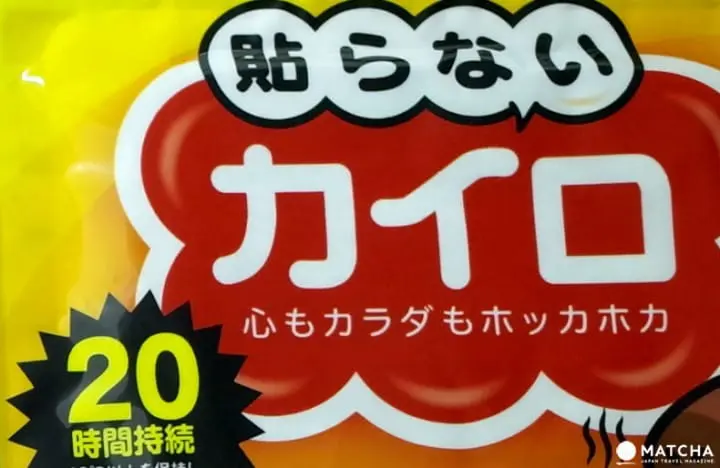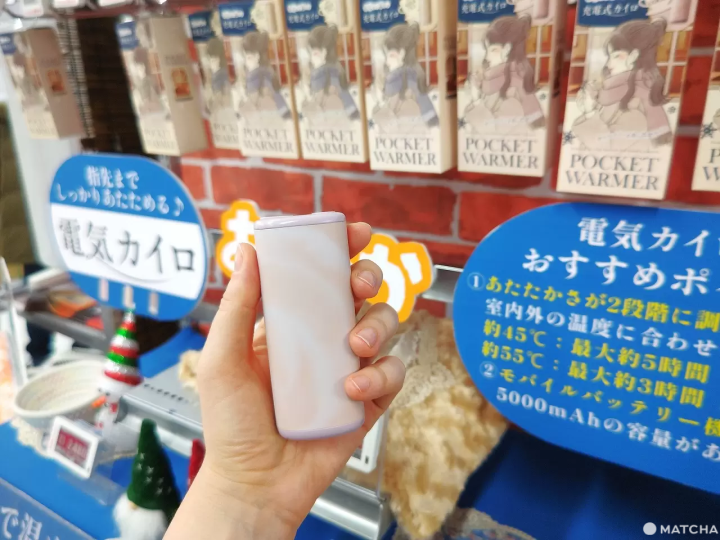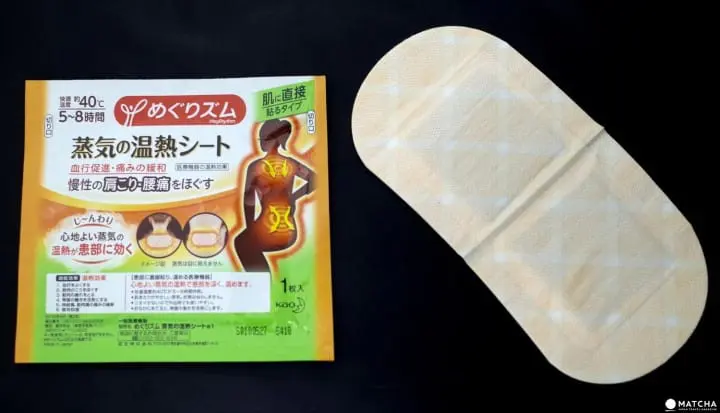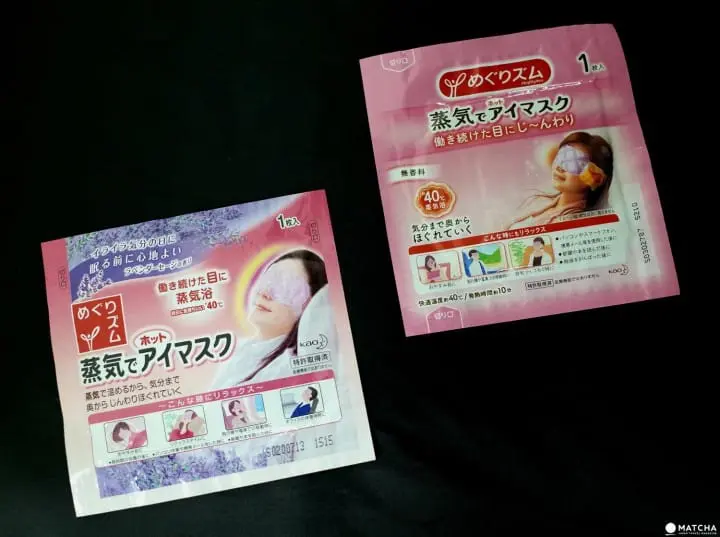Kairo Heat Packs in Japan: 6 Types, Where to Buy, How to Use

Planning a winter trip to Japan? Learn how to stay warm with kairo (heat packs/pocket warmers), where to buy them at drugstores, the 6 best types, including adhesive and electric versions, and tips for staying cozy on the go.
Use Heat Packs in Stay Warm in Japan
Winter in Japan can be famously chilly, leaving many travelers wondering how to stay warm while exploring. Fortunately, Japan has a clever solution to keep the frost at bay: kairo, also known as heat packs, handwarmers, or pocket warmers.
Read on to discover what heat packs are, the different types available, where to find them, and our top recommendations.
Heat Packs: Types and Where to Buy
What are Japanese Heat Packs?
How to Use Japanese Heat Packs
Where to Buy Heat Packs in Japan and Price Guide
Heat Pack Types
1. The Original: The Kairo Pocket Warmer
2. The Attachable Type: Sticky Heat Packs
3. Electric Kairo: Chargeable Pocket Warmers
4. Toasty Shoes: Heat Packs for Your Feet
5. Easing Pain: Medical Heat Packs
6. For Tired Eyes: The Heated Eye Mask
What are Japanese Heat Packs?

While you may be familiar with reusable, microwavable pocket warmers, Japan’s version—known as kairo—offers a different level of convenience.
Unlike the ones you might have at home, kairo heat packs are air-activated, self-heating, and disposable.
What truly sets Japanese heat packs apart, however, is the variety. They aren't just for your hands; there is a specialized kairo for almost every part of your body.
One very important word to look out for when you choose your heat pack is the word "haru" (written 貼る or はる), which means "to stick to" in English.

If you want a heat pack that stays in place, look for the "haru" (貼る) type. These feature an adhesive backing designed to stick directly to your clothing.
If you aren't sure which one to grab, look for a small illustration on the packaging showing a hand peeling a sticker—this is a universal sign that it’s the adhesive version.

For the standard version that you can hold in your hands or slip into your pockets, look for the "haranai" (貼らない) type. This literally translates to "not sticking."
Since these don't have an adhesive backing, they are perfect for moving between your pockets or holding in your gloves to keep your fingers toasty.
How to Use Japanese Heat Packs
While the styles differ, most heat packs work using the same simple science: when the iron powder inside is exposed to oxygen, it creates a chemical reaction that generates heat.
Once you remove the pack from its wrapper, give it a gentle shake or a light massage to get the air flowing. You’ll feel it start to warm up within a few minutes.
Don't worry about them becoming dangerously hot; most are designed to maintain a steady, comfortable temperature of around 52°C (125°F).
Where to Buy Heat Packs in Japan and Price Guide
You can find heat packs almost everywhere in Japan. For a quick fix, stop by any convenience store (like 7-Eleven or Lawson).
For better variety and prices, head to major drugstores like Matsumoto Kiyoshi or discount giants like Don Quijote.
If you’re staying for a while, it’s much cheaper to buy in bulk. While a single pack is convenient, a 10-pack or a large box of 30 pieces offers the best value. A bulk box typically costs around 700 yen, making it a very affordable way to stay warm all season.
On average, a 10-pack of standard pocket warmers costs between 300 and 500 yen. The "haru" (sticky) type is similarly priced, often ranging from 300 to 500 yen for a pack of ten.
If you need specialized warmth, toe and foot warmers (designed to fit inside shoes) generally cost between 500 and 800 yen for a 5-pair pack. For those seeking relief from muscle tension, medical-grade heat packs (which often reach slightly higher temperatures or provide steam) range from 600 to 1,200 yen.
Finally, the popular heated eye masks—perfect for long flights or relaxing after a day of sightseeing—typically cost between 1,000 and 1,500 yen for a box of 12.
Starting in the fall, you’ll find these warmers everywhere. They are usually placed in prominent displays near store entrances or cash registers for easy access. You can even find smaller packs at 100-yen stores like Daiso or Seria if you just need a couple for the day.
Below, we introduce six popular types of kairo heat packs.
1. The Original: The Pocket Warmer

The non-adhesive pocket warmer is the classic version of the kairo. Resembling a soft, small pillow, its primary purpose is to keep your hands warm. Simply activate it and slip it into your coat pocket or hold it directly in your palms—it’s a lifesaver if you’ve forgotten your gloves!
If you find the standard size too bulky, look for the "mini" (ミニ) version. These are roughly half the size of the original. While small, they are incredibly versatile; many people tuck the adhesive mini-type into their gloves or socks for targeted warmth.
- Standard Size Kairo: Stays warm for up to 20 hours.
- Mini Size Kairo: Usually lasts for about 10 hours.
2. The Attachable Type: Sticky Heat Packs

As mentioned, there is also an adhesive version of the common heat pack. Simply look for the word "Haru" (貼る) on the packaging.
By peeling off the backing, you can attach these directly to your clothing. They are fantastic for maintaining a steady body temperature or providing soothing relief for minor aches and stiff muscles. For the best results, many locals recommend sticking them to a base layer over the lower back or the center of the shoulders.
Important: Never apply adhesive heat packs directly to your skin. They are designed to be attached to your clothing only. Direct contact can cause skin irritation, allergic reactions to the adhesive, or "low-temperature burns"—which happen when skin is exposed to moderate heat for a long period.
When used correctly over a base layer, however, they are incredibly effective. Some people even apply multiple packs to their undershirts to create a "cocoon" of warmth while exploring the outdoors.
Generally, the sticky type of kairo provides steady heat for up to 12 hours.
3. Electric Kairo: Chargeable Pocket Warmers

ELectric kairo on sale at BicCamera
Electric pocket warmers are a popular new alternative to disposable packs. Featuring sleek, ergonomic designs, they are easy to hold or slip into a jacket pocket.
Unlike traditional kairo, these are reusable and rechargeable, allowing you to customize your warmth with adjustable temperature settings. Typically, you can choose between two modes:
- 45°C (113°F): Perfect for staying cozy indoors or on a train.
- 55°C (131°F): Ideal for long periods spent outdoors in the cold.
Keep in mind that the battery life depends on your heat setting. At the 45°C setting, the battery can last up to 5 hours, while the higher 55°C setting will reduce the duration to about 3 hours.
You can find a great selection of electric pocket warmers at BicCamera. If you're visiting from abroad, don’t forget to use our tax-free coupon to save up to 17% on your shopping.
4. Toasty Shoes: Heat Packs for Your Feet

If your toes tend to get painfully cold during winter walks, foot warmers are a total game-changer. Japan offers two main versions to tackle this:
- The most common is the adhesive sock warmer (kutsushita-yo). These are designed to stick directly onto your socks.
Pro tip: Many locals prefer sticking them to the top of their toes rather than the bottom. This prevents the discomfort of stepping on the pack and reduces the risk of the heat becoming too intense from the pressure of your body weight. As always, remember to stick them to your socks—never directly to your skin.
- The second variation is a heat pack designed to go directly into your shoes. These are available as either half-insoles (focusing on the toes) or full-length insoles. The bottom is lined with a non-slip material like foam or rubber to keep them from sliding, while the top generates consistent heat.
It is very easy to tell the different types apart by looking at the packaging:
- Sock warmers feature an illustration of a sock.
- Shoe/Insole warmers show an illustration of a shoe.
Because footwear has limited airflow, these specialized packs typically stay hot for about 5 to 8 hours—perfect for a morning of sightseeing or an afternoon at a winter festival.
5. Easing Pain: Medical Heat Packs

Unlike standard kairo, medical-grade heat packs are specifically designed for direct skin contact. These are ideal for soothing lower back pain, stiff shoulders, or muscle aches using gentle, therapeutic heat.
Because they don't contain any medicine, they can also be used as a safe way to stay warm if you have sensitive skin.
While they are rated for 40°C (104°F), they often feel milder than standard packs because the heat is released more gradually to protect your skin. These typically provide steady, soothing relief for 5 to 8 hours.
6. For Tired Eyes: The Heated Eye Mask

Heated eye masks are a treat for tired eyes. While they are a wonderful addition to your nightly routine, they are also the ultimate travel companion.
Whether you are on a long-haul flight, a highway bus, or a Shinkansen journey, these masks create a portable spa experience. After a short rest, you’ll wake up feeling refreshed with eyes that feel hydrated and relaxed.
The mask reaches its peak temperature within minutes and provides active steam heat for about 10 to 20 minutes, though it remains warm and cozy for much longer.
Stay Warm in Winter with Heat Packs
From keeping your toes toasty to soothing tired eyes, Japan’s wide range of heat packs has you covered. It’s hard to pick a favorite when they are all so useful!
Next time you’re at a Japanese drugstore or convenience store, pick up a few different packs to see which ones work best for you. Stay warm and enjoy your winter adventures!
FAQ
How do you use a Japanese heat pack?
Using a Japanese heat pack, or kairo, is a simple way to generate warmth for relieving muscle aches, stiffness, or maintaining warmth in chilly conditions. To use a kairo effectively, activate the pack by shaking or kneading it to start the heating process with air. Once activated, let it gradually warm up after exposure to air. Place the adhesive side of the pack on clothing around the targeted area like the neck, shoulders, back, or abdomen. Adhere to the manufacturer's instructions for the recommended duration of use, typically providing warmth for several hours before cooling down. When the pack has cooled, dispose of it properly according to the manufacturer's guidelines, as specific materials may require special disposal methods. To prevent burns, avoid direct contact of the heat pack with your skin by using it over a layer of clothing.
What are heat packs used for?
Heat packs, also known as kairo in Japanese, are versatile tools offering warmth and comfort for various purposes. Common uses include muscle relief for aches and tension, pain management for conditions like arthritis and menstrual cramps, warmth during outdoor activities, relief from menstrual cramps, stress reduction, and improving circulation. Kairo are effective in promoting muscle relaxation, pain relief, stress reduction, and circulation improvement.
How long do heat packs stay warm?
Kairo or heat packs typically stay warm for varying durations depending on the type and brand. Generally, kairo can provide warmth for around 8 hours, with some types lasting up to 20 hours. The duration of warmth can depend on factors such as the specific product, size of the heat pack, ambient temperature, insulation, and the type of heat pack.
How does heat pack relieve pain?
Heat packs, including kairo, relieve pain through various mechanisms such as increasing blood circulation, promoting muscle relaxation, activating the gate control theory to override pain signals, improving joint flexibility, triggering the release of endorphins, and reducing stress in the affected area. By leveraging these effects, heat packs help alleviate pain effectively. It's crucial to use heat packs correctly to maximize their pain-relieving benefits.
Is it OK to sleep with a heat pack?
Sleeping with a heat pack or kairo is not recommended due to the risks involved, including the potential for burns, overheating, fire hazards, and decreased awareness of temperature. It is safer to use the heat pack according to the manufacturer's guidelines during waking hours and remove it before going to sleep to prevent any safety issues while asleep.
How much is a kairo heat pack in Japan?
The price of a kairo heat pack in Japan can vary depending on the brand, size, quality, and features of the heat pack. Typically, a single Kairo heat pack can cost anywhere from about 25 yen to a few hundred yen in Japan.
Prices may also vary based on whether the heat pack is disposable or reusable, the duration of heat it provides, and any additional functionalities it may offer. Additionally, purchasing Kairo heat packs in bulk or as part of a set may affect the overall price. A set of 10 heat packs costs between 263 yen and 405 yen. A box with 30 heat packs can be bought at drug stores starting from about 530 yen.
I was born and raised in Berlin, Germany and am living in Tokyo, Japan since 2008. I am native in German and English.
I am a cat-mom to three rescue cats and I have a deep love for 90s rock music, kickboxing, history, chocolate and cookie dough, anything pistachio flavored, cats and bats, dragons and vampires and all things creepy-cute.
My favorite book author is Anne Rice. My favorite band is LUNA SEA.
My most recommended Japanese movie is 'Merry Christmas, Mr. Lawrence', featuring David Bowie and Ryuichi Sakamoto.






































![[2026] Top 5 Strawberry Picking Spots in Tokushima, Naruto| Farms and Access Guide for January to May](https://resources.matcha-jp.com/resize/720x2000/2025/03/06-227165.webp)



